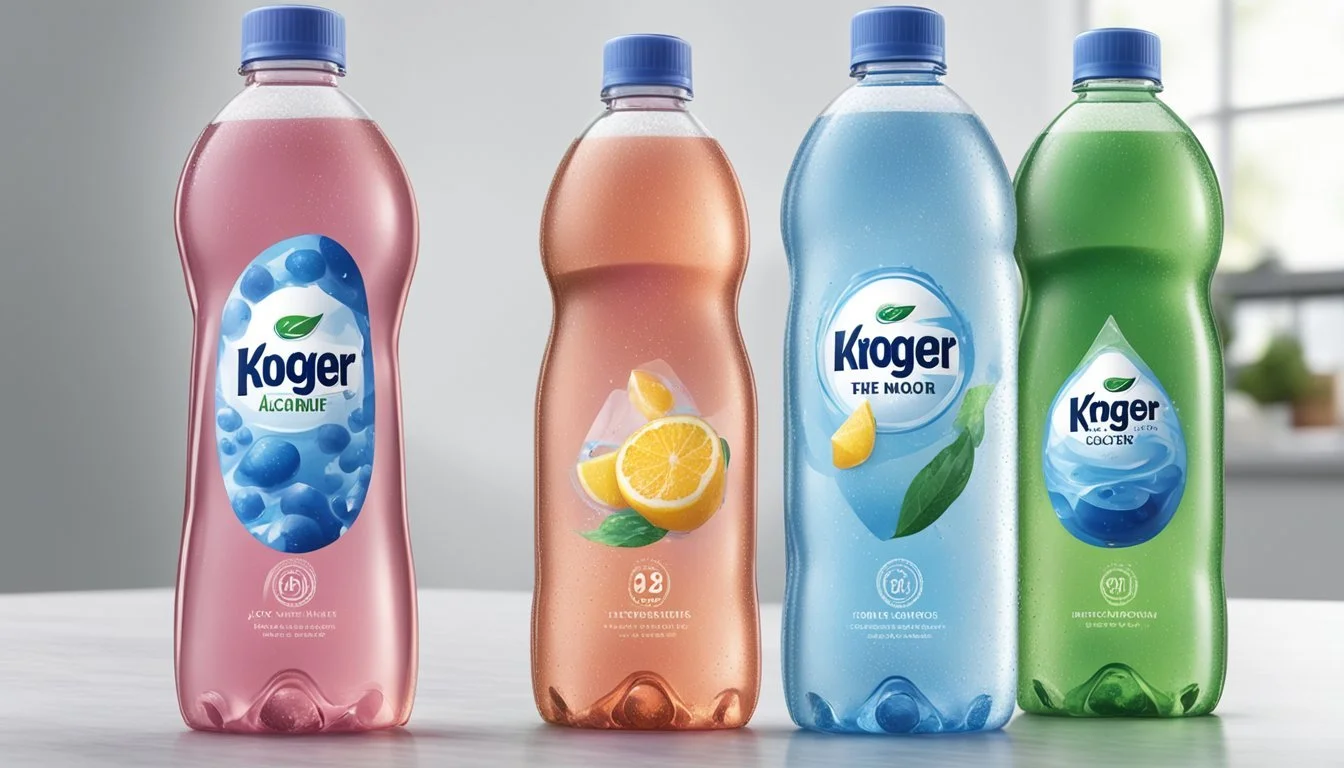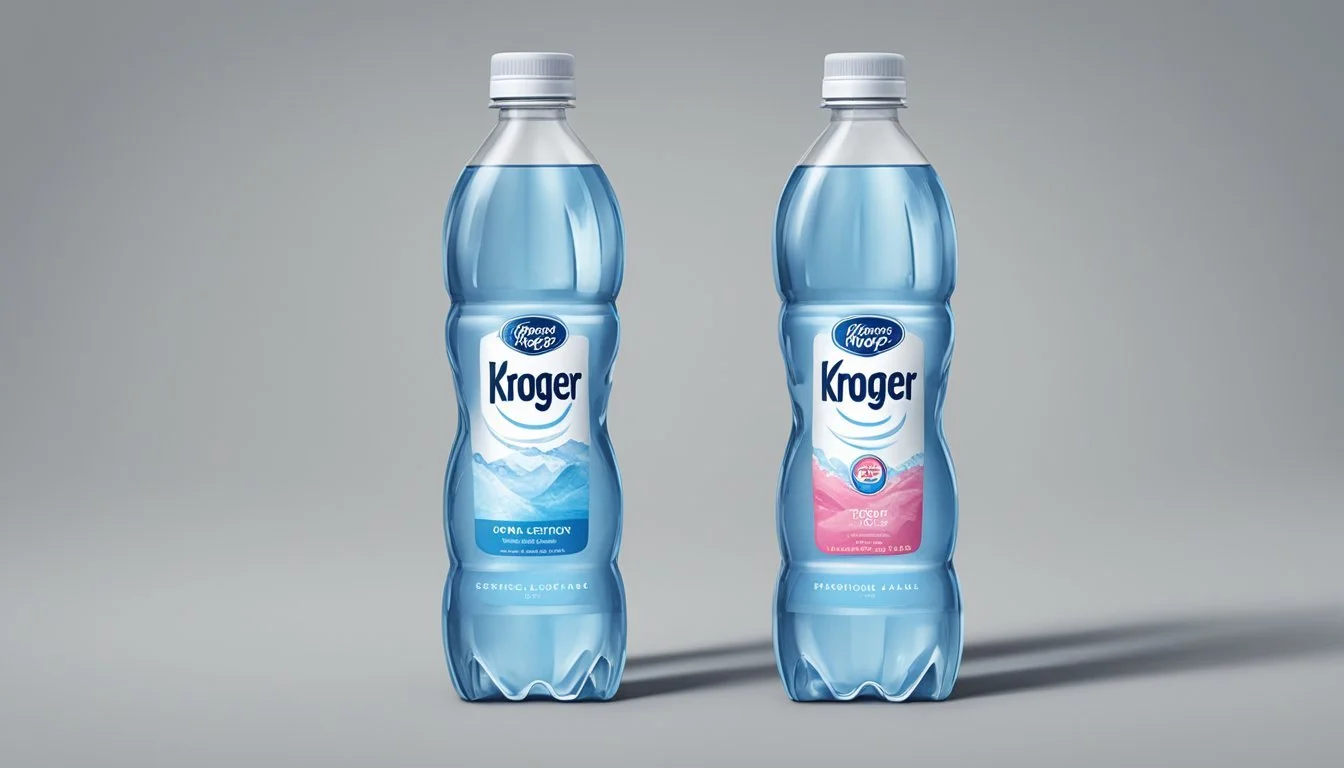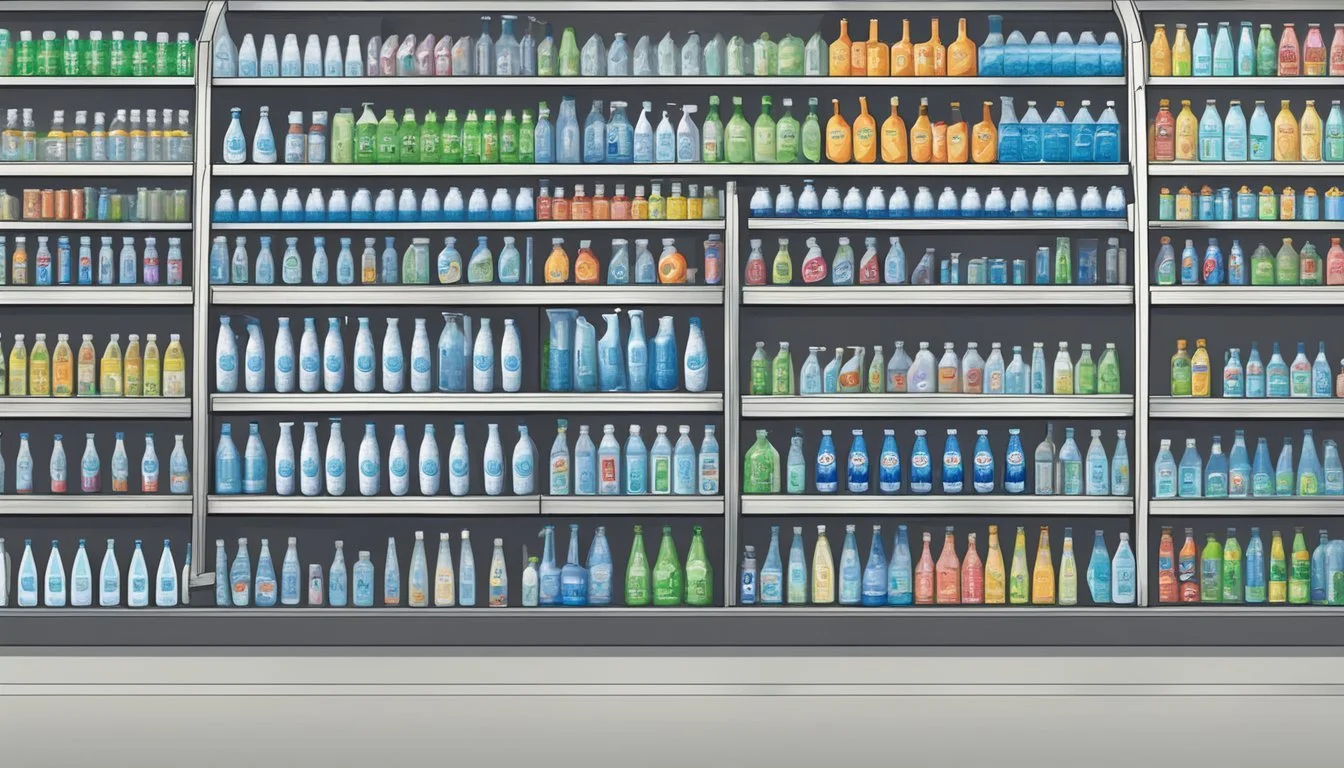Kroger vs. Action
Which Bottled Water is Better? A Comprehensive Comparison
Choosing the right bottled water can significantly impact your daily hydration routine. When comparing Kroger and Action bottled water, it’s essential to consider both quality and environmental footprint. Kroger bottled water adheres to FDA regulations, ensuring it meets safety and quality standards, but concerns over contaminants such as microplastics and BPA persist.
On the other hand, Action bottled water is often praised for its taste and stringent purification processes, making it a popular choice among consumers. While both brands aim to provide clean and safe water, Action’s commitment to reducing plastic waste by offering recyclable packaging sets it apart.
Ultimately, the decision between Kroger and Action bottled water boils down to personal preference regarding taste, packaging, and brand values. The article will explore these aspects in detail, helping you make an informed choice for your hydration needs.
Understanding Bottled Water
Bottled water comes in various types, each differing in source, treatment, and mineral content. Its quality is regulated to ensure safety and consistency, but comparisons with tap water and its environmental impact are also important considerations.
Types of Bottled Water
Bottled water can be categorized into several types:
Spring Water: Sourced from natural springs, it contains minerals and is often preferred for its taste.
Mineral Water: Contains a defined quantity of minerals from its natural source, beneficial for health.
Purified Water: Treated through processes like distillation or reverse osmosis, removing impurities.
Sparkling Water: Carbonated, either naturally at the source or artificially.
Each type serves different consumer preferences and needs based on taste, mineral content, and origin.
Regulatory Standards
Bottled water regulation is extensive to ensure safety and quality. The FDA oversees these products, requiring bottlers to follow strict standards on sourcing, processing, and labeling.
Here's a comparison of key regulatory aspects:
Parameter Bottled Water Tap Water Regulating Body FDA EPA Testing Frequency Annually Multiple times/day Contaminant Limits FDA-defined EPA-defined
These regulations establish limits on contaminants like nitrates, sulfates, and microplastics, although concerns about the latter still persist.
Bottled vs Tap Water
Many believe bottled water is superior to tap water in terms of quality and safety. Studies show that 64% of bottled water is simply repackaged tap water, sometimes filtered or treated for impurities.
Key Differences:
Source: Tap water is municipally treated, while bottled water may come from springs or municipal sources.
Regulation: Bottled water is FDA-regulated, but tap water is regulated by the EPA, sometimes more rigorously.
Taste: Bottled water often differs in taste due to mineral content and source.
Environmental Concerns
The environmental impact of bottled water is significant.
Issues:
Plastic Pollution: Most bottles are made from single-use plastic, contributing to pollution and waste in oceans and landfills.
Resource Use: Producing and transporting bottled water requires substantial energy and water, increasing its carbon footprint.
Efforts to mitigate these impacts include using BPA-free bottles and encouraging recycling, though challenges remain in reducing overall waste.
Examining Water Quality and Source
When comparing Kroger and Action bottled water, key considerations include the origin of their water sources, the quality and presence of contaminants, and adherence to health and safety standards.
Water Source and Origin
Kroger bottled water often comes from municipal water sources that undergo additional purification processes. They typically disclose the source on their labels, providing transparency about whether the water is derived from springs or treated public supplies.
Action water, on the other hand, emphasizes sourcing from natural springs and artesian wells. This distinction can affect consumer preferences, especially for those who prioritize natural water sources over treated tap water.
Contaminants and Chemical Composition
Both Kroger and Action conduct rigorous testing to meet FDA and Environmental Protection Agency (EPA) standards, ensuring their products are safe for consumption. Kroger water meets standard safety regulations but may still contain traces of microplastics and BPA, though many bottles are transitioning to being BPA-free.
Action water markets itself as having minimal contaminants, often highlighting the absence of heavy metals and unregulated chemicals that can leach from plastic. This emphasis on purity and minimal chemical presence is a significant selling point for health-conscious consumers.
Health and Safety Assessments
Health and safety regulations are crucial for bottled water companies. Kroger adheres to FDA guidelines, ensuring the water is processed and bottled under sanitary conditions. They are meticulous about quality reports and provide information on treatment methods.
Action water also complies with stringent safety standards, frequently testing water for contaminants and maintaining legal limits set by the EPA. Their commitment to transparency is evident in readily accessible water quality reports, detailing all test results, which reassures consumers about the safety and cleanliness of their drinking water.
Comparing Brands and Water Types
When it comes to picking the right bottled water, consumers are often torn between brand reputation, type of water, and personal taste preferences. This section compares Kroger brand water with other market leaders in the bottled water industry.
Kroger Brand Water Overview
Kroger bottled water adheres to FDA regulations, ensuring it meets safety and quality standards. The water is sourced from multiple locations and goes through rigorous purification processes, which can include reverse osmosis, distillation, or other techniques.
Kroger offers both purified and spring water options. While economical and widely available, questions about contaminants like microplastics and BPA have been raised, though many bottles are now BPA-free. The environmental impact of using plastic bottles is also a consideration.
Alternatives: Exploring Market Leaders
Several prestigious brands dominate the bottled water market, each offering unique qualities. Brands such as Evian, Fiji, and Voss are known for their premium sources and appealing taste. Evian sources its water from the French Alps, providing natural mineral content.
Fiji boasts water from an artesian aquifer in Fiji, which is rich in silica. Voss offers exceptionally pure water from Norway, often packaged in sleek glass bottles. Other options include Nestlé Pure Life, Aquafina, and Dasani, which offer purified water generally sourced from municipal supplies and undergo extensive filtration processes.
Brand Source Type of Water Evian French Alps Natural Mineral Fiji Artesian Aquifer Artesian Voss Norway Purified Dasani Municipal Sources Purified Arrowhead Springs in the U.S. Spring
Consumer Taste Preferences
Preferences in bottled water often depend on taste, mouthfeel, and perceived purity. Mountain Valley and Poland Spring are praised for their clean, light flavors.
Smartwater and Essentia appeal to those seeking enhanced water with added electrolytes. Core Hydration offers balanced pH water that targets health-conscious consumers.
Pure Life and Deer Park offer more neutral tastes, making them versatile for daily hydration.
LifeWtr and Aquafina prioritize a crisp, clean taste, while ensuring rigorous purification. Taste preferences can be subjective, influenced by mineral content, and even packaging design.
By understanding the variety in water types and brand offerings, consumers can make better choices based on their specific needs and preferences.
Health Impacts of Water Choices
When choosing between Kroger and Action bottled water, understanding the health impacts related to plastic bottles and water filtration is essential. Both brands adhere to FDA regulations, but differences in their treatment processes and materials used can affect health.
Chemical Concerns in Plastic Bottles
Plastic bottles can leach chemicals into the water they contain. This includes microplastics, which have been found in many bottled water brands, posing potential health risks.
Bisphenol A (BPA) and other plasticizers have historically raised concerns, although many bottles are now marketed as BPA-free. Even BPA-free bottles can release other potentially harmful chemicals.
PFAS chemicals are another concern. These have been linked to various health issues and have been detected in bottled water.
Consumers should be aware of potential contaminants such as lead and arsenic, which can be found in low-quality bottled water. Ensuring the brand conducts regular safety checks and complies with high standards is crucial.
The Importance of Filtration and Purification
The filtration and purification processes used in bottled water production are critical for health safety. Kroger and Action employ methods such as reverse osmosis and multi-stage filtration to remove impurities.
Reverse osmosis is effective at eliminating heavy metals, PFAS chemicals, and other contaminants, providing safer drinking water. It's essential to understand these systems' ability to target specific pollutants like lead and arsenic.
Some brands, including Action, offer additional purification technologies like Hydro-7, which further enhance water quality. Ensuring the water has the correct pH levels also contributes to overall safety and health benefits.
By choosing bottled water with comprehensive filtration and purification, consumers can minimize potential health risks. Always check for recent recalls and reports to stay informed about the safety of your chosen brand.
Economic Considerations
This section explores the different costs related to bottled water from Kroger and Action, as well as the impact of these choices on consumers' budgets and preferences.
Cost Analysis of Bottled Water
When analyzing the cost of bottled water, it's important to note that Kroger offers a range of price points, often positioning itself as a more inexpensive option compared to other water brands.
A 24-pack of Kroger bottled water can typically be purchased for around $3-$4. This makes it a cost-effective choice for those looking to save.
In comparison, Action bottled water is usually more expensive, with prices often exceeding $1 per bottle. This price difference may be justified by perceived quality or marketing.
Consumers should also consider the cost of alternative water sources and the potential cost savings of using recyclable materials.
Impact of Water Choices on Consumers
The choice between Kroger and Action bottled water can significantly impact consumers in terms of price, convenience, and perceived quality.
For budget-conscious consumers, Kroger’s inexpensive pricing becomes attractive, especially for those purchasing in bulk. This cost-saving aspect can ultimately lead to better budget management.
Conversely, consumers willing to spend more on bottled water often look for perceived quality and convenience features, which is where Action may excel.
Environmental consciousness also plays a role as many consumers are now weighing the economic and ecological costs of their water choices, including the use of recyclable materials.
Environmental Aspects
The environmental impact of bottled water raises significant concerns, especially when comparing brands like Kroger and Action. Key issues include the sustainability of their packaging and potential alternatives to single-use bottles.
Sustainability and Packaging
Plastic water bottles contribute substantially to environmental pollution. Many bottles end up in landfills or the ocean, where they can break down into microplastics, posing a threat to wildlife and ecosystems.
Kroger has made efforts to reduce BPA in their bottles, but this doesn't address the broader environmental issue. Both brands must ensure their packaging is as environmentally friendly as possible, utilizing recycled materials and advocating for recycling.
Natural springs as sources also play a role; ensuring that the extraction and purification process do not harm local ecosystems is essential.
Alternatives to Single-Use Bottles
Replacing single-use plastic bottles with reusable bottles is a practical solution. Consumers can use bottles made of stainless steel or glass, which are both convenient and reduce plastic waste.
Public tap water systems, when well-maintained, offer a reliable and clean alternative. Regular quality assurance and purification can ensure its safety.
Both Kroger and Action could promote awareness around the use of reusable bottles and support infrastructure for public water sources to lessen their environmental impact. This approach not only benefits the environment but also offers a sustainable choice for consumers.
Key Takeaways for Consumers
Here is an analysis of the primary factors to consider when choosing between Kroger and Action bottled water for daily hydration, focusing on aspects such as quality, value, and recommendations.
Summarizing Quality and Value
Kroger bottled water is recognized for meeting FDA regulations, ensuring it adheres to safety and quality standards.
Benefits of Kroger Water:
Affordable pricing: Often more economical than some premium brands.
BPA-free options: Newer bottles avoid harmful chemicals.
Yet, Kroger faces criticism due to environmental concerns and potential presence of microplastics.
Action Water often emphasizes wellness and purity, sourced from reputed locations. For example, Icelandic Glacial is noted for its refreshing taste and mineral-rich profile, which may appeal to those seeking high-quality hydration. This brand tends to score well in taste tests but is sometimes less accessible.
Recommendations for Daily Hydration
Kroger offers a cost-effective option for regular hydration needs without sacrificing basic safety and quality. It is ideal for consumers prioritizing budget, though they should remain aware of the environmental impact of plastic bottles.
For those prioritizing mineral content and taste, premium options like Acqua Panna or Icelandic Glacial might be more appealing, despite higher costs. These brands are often sourced from natural springs, providing an enhanced hydration experience with additional electrolytes.
Consumers should consider convenience: Kroger is widely available across states, whereas premium brands may be harder to find. Balancing quality, price, and availability will help consumers make informed choices satisfying both health and lifestyle needs.
More About Kroger
Kroger vs Kirkland Signature: Which Bottled Water is Better?
Kroger vs Richard's Rainwater: Which Bottled Water is Better?
Mountain Valley Spring Water vs Kroger: Which Bottled Water is Better?
Whole Foods Italian Still Mineral water vs Kroger: Which Bottled Water is Better?






